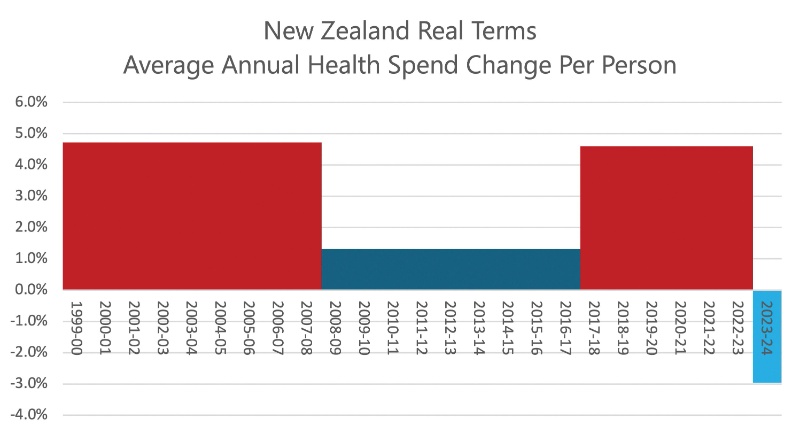State of Environment report reveals NZ’s dirtiest industry
The new State of the Environment report paints a "comprehensively damning" picture of the dairy industry.
The cornerstone report out today says the industry is not only degrading biodiversity, rivers and lakes, hastening climate change, it also points to our seas as another environmental victim of intensive dairying.
"Dairy bosses have been telling us they’re well on the way to cleaning up their act, but the environmental statistics show the truth - the biggest degradations in New Zealand’s environment in recent years have been caused by the dairy industry, says Greenpeace senior campaign and political advisor, Steve Abel.
"Dairy has contributed to the degradation of almost every environmental metric in New Zealand, including filling the marine environment with sediment."
Greenpeace is calling for the Government to eliminate synthetic nitrogen fertiliser to cut pollution and reverse dairy expansion.
Yesterday’s announcement that the Coalition would not introduce a fertiliser tax is an indication the country is heading in the wrong direction.
"So far this Government has allowed the agricultural industry to shirk responsibility for almost everything, from river pollution and the destruction of fragile landscapes like the Mackenzie, to its role as New Zealand’s biggest climate emitter. As a nation reliant on an international reputation of being clean and green, we’re failing pretty epically," says Abel.
"This latest report from the Ministry for the Environment is a withering exposé of dairy’s part in trashing the planet.
"It is undeniable that the dairy industry deserves the title of the dirtiest industry in New Zealand, and urgent action is required."
Almost half of the country is now pasture - more than any other land cover - while only quarter is forest.
"To turn this around, the Government must institute policies that will lead to land use change, get rid of synthetic nitrogen fertiliser, dramatically reduce cow numbers, and invest millions into regenerative farming."
References:
The report repeatedly points to the harmful impacts of livestock farming and particularly dairying.
It cites that the largest single type of land cover is now exotic pasture (40% of our total land area), and that conversion to pasture has contributed to 70,000 hectares of native vegetation loss between 1996-2012, and over 1,000 hectares of wetlands since 2001 (summary p11).
It points the finger at dairy intensification particularly in Canterbury and Otago and a 70% increase in the national dairy herd between 1994 and 2017 (summary p15).
44% of soil erosion entering rivers comes from pasture (summary p11).
"There is clear evidence that waterways in our farming areas have markedly higher pollution by nutrients (nitrogen and phosphorus), microbial pathogens, and sediment than waterways in native catchments" (p 47 main report) Due to pathogens, "82% of river length in pastoral farming areas is not suitable for activities such as swimming" (summary pg 15). Around half of our rivers are in pastoral areas whereas less than 1% are in urban areas (in total, 188,024 kilometres of New Zealand’s river length is in pastoral land-cover class, and 198,126 kilometres in the native land- cover class compared with 3,344 kilometres the urban land-cover class.)
The area of irrigated agricultural land almost doubled between 2002 and 2017 from 384,000 hectares to 747,000 hectares - a 94% increase. In 2017, 64% of New Zealand’s irrigated agricultural land was in Canterbury (p 77 main report). The area of irrigated agricultural land almost doubled between 2002 and 2017 from 384,000 hectares to 747,000 hectares - a 94% percent increase. Irrigated land area rose in every region during this time but the total increase was largely due to the almost doubling of irrigated land in Canterbury (241,000 to 478,000 hectares). In 2017, 64 percent of New Zealand’s irrigated agricultural land was in Canterbury. (See indicator: Irrigated land.) - Pg 77
Nearly half of our gross climate pollution in 2016 (mainly methane and nitrous oxide) came from agriculture. Methane and nitrous oxide from agriculture is one of the key reasons New Zealand has very high per person emissions (summary pg 28). In 2016, livestock digestion was responsible for 82 percent of all methane emissions. Ninety-four percent of all nitrous oxide emissions were from agricultural soils, mainly from the urine and dung of grazing animals. - Pg 94 Agriculture and primary industries are likely to be strongly affected by climate change through an increase in climate variability, changed average rainfall and temperatures, and more extreme events including drought.
- "there is clear evidence that waterways in our farming areas have markedly higher pollution by nutrients (nitrogen and phosphorus), microbial pathogens, and sediment than waterways in native catchments." (p 47 main report)
The report also notes nutrient and pathogen runoff from agriculture, alongside erosion and excess sediment, as significant threats to marine environment.
ENDS


 Gordon Campbell: On The Americanising Of NZ’s Public Health System
Gordon Campbell: On The Americanising Of NZ’s Public Health System PSA: 1000 Days Since Landmark Pay Equity Deal Expired - Workers Losing $145 A Week
PSA: 1000 Days Since Landmark Pay Equity Deal Expired - Workers Losing $145 A Week Grace Tinetali-Fiavaai, RNZ: Widow Of Fa'anānā Efeso Collins Seeks Inquiry Into His Death - 'Unanswered Questions'
Grace Tinetali-Fiavaai, RNZ: Widow Of Fa'anānā Efeso Collins Seeks Inquiry Into His Death - 'Unanswered Questions' Te Pāti Māori: Te Pāti Māori Call For Mandatory Police Body Cameras
Te Pāti Māori: Te Pāti Māori Call For Mandatory Police Body Cameras NZ First Party: NZ First Introduces the “Conscience Acts Referendums Bill”
NZ First Party: NZ First Introduces the “Conscience Acts Referendums Bill” NZ Government: Unlocking Data To Increase Competition And Choice
NZ Government: Unlocking Data To Increase Competition And Choice Lawyers for Climate Action: National MP’s Bill Raises Environmental And Constitutional Concerns
Lawyers for Climate Action: National MP’s Bill Raises Environmental And Constitutional Concerns


